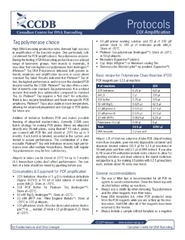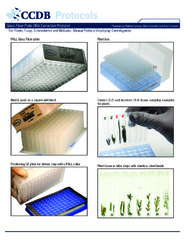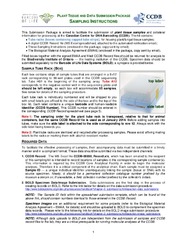| dc.contributor.advisor | Eilertsen, Hans Christian | |
| dc.contributor.advisor | Gusarova, Galina | |
| dc.contributor.author | Uradnikova, Martina | |
| dc.date.accessioned | 2020-05-20T08:26:08Z | |
| dc.date.available | 2020-05-20T08:26:08Z | |
| dc.date.issued | 2020-02-15 | |
| dc.description.abstract | Relevant taxonomical morphological characters of five common spring bloom centric diatoms, preliminary identified as Attheya longicornis Crawford & Gardner, Chaetoceros furcellatus Yendo, Porosira glacialis Jørgensen, Coscinodiscus sp. and Skeletonema marinoi Sarno & Zingone were observed and described using light and scanning electron microscope.
Further, samples of cultured diatoms were sent to the Canadian centre of DNA Barcoding (CCDB) for DNA extraction, PCR and sequencing. Out of five submitted replicates for each species, CCDB gained five sequences of Attheya strain nr. 20.2, two sequences of Chaetoceros strain nr. 61 and one sequence of Porosira strain nr. 201 based on marker of rbcL gene from chloroplast. One sequence of Skeletonema strain nr. 204 resulted from sequencing of 16S rRNA gene. Sequencing was not successful for Coscinodiscus strain nr. 203.
According to results from the morphologic examination, with some uncertainty, it is possible to conclude that strain nr. 20.2 is Attheya longicornis. Chaetoceros strain nr. 61 is estimated to be Ch. furcellatus, but it is not possible to identify certainly due to missing SEM images of spores and missing appropriate phylogenetic data. Porosira strain nr. 201 is Porosira glacialis, mainly based on morphologic description, with indication from molecular survey. Coscinodiscus strain nr. 203 is Coscinodiscus concinnus and Skeletonema strain nr. 204 is Skeletonema marinoi. Both last named species were identified only according to morphologic features.
Using reference DNA sequences available in the GenBank, it was possible to demonstrate that rbcL gene from chloroplast is a promising marker for DNA barcoding of diatoms, as many species were found in strongly supported monophylectic groups on the rbcL phylogeny, necessarily to remind that the periodic reconciliation of up to date scientific publications on diatom taxonomy is inevitable in order to perform proper taxonomic classification. | en_US |
| dc.identifier.uri | https://hdl.handle.net/10037/18343 | |
| dc.language.iso | eng | en_US |
| dc.publisher | UiT Norges arktiske universitet | en_US |
| dc.publisher | UiT The Arctic University of Norway | en_US |
| dc.rights.accessRights | openAccess | en_US |
| dc.rights.holder | Copyright 2020 The Author(s) | |
| dc.rights.uri | https://creativecommons.org/licenses/by-nc-sa/4.0 | en_US |
| dc.rights | Attribution-NonCommercial-ShareAlike 4.0 International (CC BY-NC-SA 4.0) | en_US |
| dc.subject.courseID | BIO-3950 | |
| dc.subject | VDP::Matematikk og Naturvitenskap: 400::Zoologiske og botaniske fag: 480::Marinbiologi: 497 | en_US |
| dc.subject | VDP::Mathematics and natural science: 400::Zoology and botany: 480::Marine biology: 497 | en_US |
| dc.subject | Attheya longicornis | en_US |
| dc.subject | Chaetoceros furcellatus | en_US |
| dc.subject | Porosira glacialis | en_US |
| dc.subject | Coscinodiscus concinnus | en_US |
| dc.subject | Skeletonema marinoi | en_US |
| dc.subject | diatoms | en_US |
| dc.subject | taxonomy | en_US |
| dc.subject | DNA barcoding | en_US |
| dc.title | Species validity of five common northern/Arctic spring bloom diatoms: a combined morphological and molecular study | en_US |
| dc.type | Master thesis | en_US |
| dc.type | Mastergradsoppgave | en_US |


 English
English norsk
norsk




